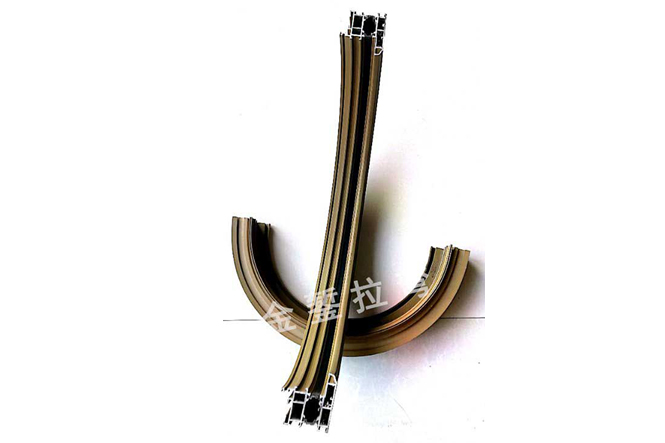Redefining the construction industry with innovative solutions, cuttin-edge technology and sustainable practices
Profile Bending 2025-07-09
In the rapidly evolving world of manufacturing, the need for precision and efficiency is paramount. Metal bending, a critical process in the fabrication of various components, is undergoing significant advancements that enhance its capabilities. This article explores how advanced metal bending solutions are transforming the industry, focusing on precision, efficiency, and the latest technological innovations.
Metal bending is the process of deforming metal materials into specific shapes and angles without altering their fundamental properties. This technique is essential in producing a wide variety of components, from structural elements in buildings to intricate parts in machinery. As industries become more competitive, the demand for high-quality, precisely manufactured components has led to the development of advanced metal bending solutions.
Key Advancements in Metal Bending Techniques
1.CNC Bending Technology
Computer Numerical Control (CNC) bending represents one of the most significant advancements in metal fabrication. CNC bending machines are programmed to execute precise bends, allowing manufacturers to achieve tight tolerances and complex geometries with remarkable consistency. The automation of the bending process reduces human error and increases productivity, enabling manufacturers to produce high volumes of components with minimal variance in quality. This technology is particularly advantageous in industries like aerospace and automotive, where precision is critical.
2.Hydraulic and Electric Press Brakes
Hydraulic and electric press brakes have transformed the metal bending landscape. Hydraulic press brakes provide powerful and consistent force, making them ideal for bending thick materials. In contrast, electric press brakes offer speed and energy efficiency, allowing for rapid production cycles. Both types of machines can be equipped with advanced features such as programmable backgauges and automatic tool changers, which streamline the bending process and enhance flexibility. These innovations enable manufacturers to adapt quickly to changing production requirements while maintaining high-quality standards.
3.Multi-Axis Bending Machines
Multi-axis bending machines enable the bending of metal in multiple directions within a single setup. This capability is particularly beneficial for creating complex components that would typically require multiple operations. By consolidating the bending process, manufacturers can reduce setup times, minimize material waste, and enhance overall efficiency. Multi-axis bending not only saves time but also improves the accuracy of the finished products, making it an essential tool in modern fabrication.
4.Robotic Bending Solutions
The integration of robotics into metal bending processes marks a significant leap forward in automation. Robotic arms equipped with advanced sensors and artificial intelligence can perform precise bends at high speeds, allowingfor continuous production with minimal downtime. This automation not only reduces labor costs but also enhances workplace safety by allowing robots to handle heavy and hazardous materials. With the ability to adjust in real-time to variations in material properties and thickness, robotic bending solutions provide unparalleled flexibility and accuracy, making them ideal for high-volume and custom production runs.

Enhancing Precision with Advanced Materials
The choice of materials plays a crucial role in the effectiveness of metal bending processes. With the advent of advanced alloys and composite materials, manufacturers are now able to produce components that are both lightweight and exceptionally strong. These materials often exhibit enhanced malleability, allowing for more intricate designs without compromising structural integrity.
Utilizing advanced materials not only leads to better performance of the final products but also supports more efficient production methods. For instance, lighter materials lead to less energy consumption during transportation and installation, contributing to overall sustainability in manufacturing practices.
The Role of Software in Metal Bending
In addition to physical advancements in machines, software solutions are also transforming the metal bending landscape. Advanced software programs enable manufacturers to simulate the bending process before actual production. This capability allows for the identification of potential issues, optimization of bending parameters, and reduction of material waste. By employing software for design and simulation, manufacturers can achieve faster turnaround times and enhance the overall quality of their products.
Furthermore, integration with other software systems, such as Enterprise Resource Planning (ERP) and Manufacturing Execution Systems (MES), allows for better tracking of materials, labor, and machine performance. This interconnected approach ensures that manufacturers can respond quickly to changes in demand and optimize their production processes.
Cost Efficiency and Sustainability
Advanced metal bending solutions contribute significantly to cost efficiency in manufacturing. By minimizing waste, reducing energy consumption, and optimizing production times, manufacturers can lower their operational costs. Additionally, the adoption of efficient bending processes can lead to more sustainable practices, as less material waste translates to fewer resources used overall.
Moreover, as industries face increasing pressure to adopt environmentally friendly practices, advanced metal bending technologies can help companies achieve their sustainability goals. The ability to produce lightweight components that require less energy to transport and install aligns with the growing emphasis on reducing carbon footprints.
As the manufacturing landscape continues to evolve, advanced metal bending solutions are paving the way for enhanced precision and efficiency in fabrication. The integration of CNC technology, hydraulic and electric press brakes, multi-axis bending machines, and robotic solutions is transforming traditional metal bending processes. Coupled with the use of advanced materials and sophisticated software, these innovations are enabling manufacturers to meet the demands of modern production while maintainingthe highest standards of quality and sustainability.